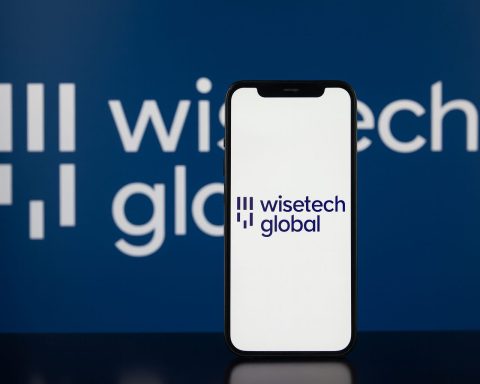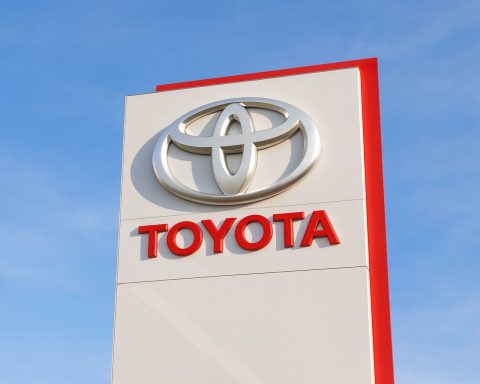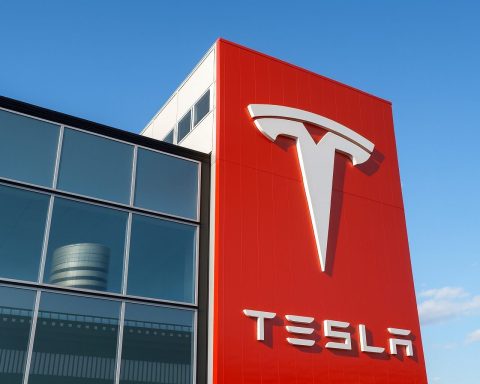- Google released a 13-second teaser of the Pixel 10 Pro ahead of its August 21 launch, showing a “10” morphing into a camera bar and revealing a new third rear telephoto lens with a gray-blue finish.
- A federal appeals court rejected a class-action claim against Apple over iCloud storage, ruling users received exactly 200GB when paying for a 200GB upgrade.
- Texas Instruments warned that new U.S. tech tariffs could distort buying patterns after its stock fell 11% on a markedly cautious earnings outlook.
- TSMC reported Q2 2025 net profit of about $13.5 billion, a 60% year-over-year rise, while raising its full-year revenue forecast and signaling capex up to $42 billion despite tariff and FX risks.
- BYD postponed mass production at its €4 billion Hungary EV factory to 2026 and shifted to a higher-volume Turkey plant expected to come online earlier, with Hungary’s capacity set at 150,000 cars per year but initial output in 2026 in the tens of thousands.
- Stellantis will sell the Leapmotor C10 in Africa from September as part of a 21% Leapmotor stake deal, with a new South Africa assembly plant targeting 100,000 vehicles per year by 2030.
- NASA’s TRACERS mission launched on July 23 aboard a SpaceX Falcon 9 from Vandenberg with Athena and PExT for a two-year polar orbit study, and the booster landed at sea to mark SpaceX’s 89th flight of the year.
- Amazon won FCC approval for an updated orbital debris mitigation plan for Project Kuiper, a key step as it readies thousands of satellites for deployment in 2025–26.
- Boeing’s Starliner Crew Test Flight has been delayed to 2026 due to ongoing safety fixes and certification hurdles, extending a timeline that originally aimed for astronauts by 2019.
- The Paris Air Show featured massive jetliner orders, including Airbus securing a 500-airplane deal with IndiGo, underscoring a rebound in aviation demand.
Consumer Electronics & Gadgets
Google offered a sneak peek at its next flagship smartphone, the Pixel 10 Pro, in a 13-second teaser video ahead of an August 21 launch. The clip shows an evolutionary design – a “10” morphing into the phone’s familiar camera bar – with the Pro model sporting a new third rear lens (telephoto) and a polished gray-blue finish [1] [2]. While not a radical redesign, the Pixel 10 Pro promises upgraded cameras and seamless Android 16 integration, aiming to drum up excitement in a competitive premium phone market. Industry watchers note Google’s teaser strategy “aims to drum up excitement” as fall launch season nears [3].
Meanwhile, Apple scored a legal win in the U.S., fending off a class-action claim over iCloud storage. A federal appeals court rejected allegations that Apple shortchanged customers on iCloud+ plans, ruling that users “received exactly what Apple promised” – 200GB total when they paid for a 200GB upgrade (not 205GB on top of the free tier) [4] [5]. The judge noted Apple’s statements weren’t deceptive just because they could be misunderstood by an insignificant segment of consumers [6], citing this case as akin to unfounded assumptions (like diet soda aiding weight loss). The decision upholds Apple’s approach to incremental cloud storage, much to the relief of the tech giant.
Chips & Semiconductors
Trade tensions are rattling the semiconductor industry even amid strong demand. U.S. analog chipmaker Texas Instruments (TI) surprised investors with a weak outlook, warning that new U.S. tech tariffs may be distorting customer buying patterns. TI’s stock plunged 11% after executives struck a “markedly cautious tone” on the earnings call, noting an auto-sector recovery “would likely be less robust as tariffs disrupt global supply chains” [7]. CEO Haviv Ilan said he “can’t rule out” that Q2’s solid sales were boosted by customers pulling orders forward to get ahead of possible tariffs [8]. Analysts observed a sudden shift in TI’s tone toward “a more cautious stance on geopolitics and tariffs” [9]. Rising costs for chip equipment and softer customer spending are starting to weigh on the sector [10]. As one analyst put it, the results are “evidence that software is not growing at the pace that the Street was expecting” in some segments [11], and tariffs are an emerging headwind.
Even so, global chip demand – especially for advanced processors – remains hot. Taiwan’s TSMC, the world’s top contract chipmaker, posted a record net profit of roughly $13.5 billion in Q2 2025, a 60% year-on-year jump, fueled by booming orders for AI-focused chips [12] [13]. TSMC raised its full-year revenue forecast and noted “demand for artificial intelligence was getting stronger and stronger,” driven by key clients like Nvidia [14]. However, TSMC’s CEO C.C. Wei cautioned that U.S. semiconductor tariffs – reportedly under consideration by President Trump – and a surging Taiwan dollar could cloud the outlook by Q4 [15] [16]. “We are becoming more conservative,” Wei said, explaining that while Q3 sales should leap ~40%, the company is bracing for possible tariff impacts later in the year [17]. Other industry leaders echoed that uncertainty: ASML and TSMC both warned of tariff-related uncertainty in recent days [18]. Despite these concerns, TSMC is pressing on with massive expansion plans (up to $42 billion in capex this year) and new U.S. fabs, betting on long-term growth in chip demand [19].
Cybersecurity & Data Breaches
A sweeping cyber-espionage campaign exploiting a zero-day vulnerability in Microsoft’s SharePoint server software has rapidly escalated into a global security crisis. Initially, researchers revealed that about 100 organizations – largely in the U.S. and Europe – were compromised via the unknown SharePoint flaw [20] [21]. Hackers leveraged the bug to implant backdoors on self-hosted SharePoint servers, potentially granting persistent access to sensitive networks. “It’s unambiguous,” said Vaisha Bernard, chief hacker at Eye Security (the firm that discovered the breach), warning that “who knows what other adversaries have done since to place other backdoors” [22]. By July 24, Microsoft disclosed a worrying twist: the attackers (whom it tracks as “Storm-2603”) are now deploying ransomware on breached servers [23] [24]. At least 400 servers worldwide have been hit – a fourfold jump in known victims [25] – and the true scope is likely larger. “There are many more, because not all attack vectors have left artifacts that we could scan for,” Bernard noted, suggesting the 400 count is an underestimation [26]. Unlike typical state-backed spying, ransomware could cause widespread disruption depending on its targets [27]. Cyber authorities like CISA have issued urgent directives for organizations to patch their systems immediately, amid fears of further fallout. Microsoft released emergency fixes and “encourages customers to install them” ASAP [28]. Analysts say this incident underscores the risks of unpatched on-premise software, coming on the heels of high-profile breaches of cloud email systems earlier in the year.
In a separate espionage saga, politically active Iranians have been quietly targeted by advanced iPhone spyware. TechCrunch reports that Apple has alerted dozens of Iranian journalists, activists, and dissidents that their iPhones were hacked by likely government-sponsored spyware [29] [30]. A new investigation by the Miaan Group details at least three waves of covert attacks linked to Iran’s regime. “Many members of their family have been executed… we have only seen the tip of the iceberg,” said Amir Rashidi, Miaan’s digital security director, emphasizing the gravity of the threat [31]. Researchers have not yet pinned down which “mercenary” spyware (e.g. NSO Pegasus or similar) was used, but evidence points to an Iranian state actor. Apple’s threat notifications – part of an initiative that has alerted users in over 150 countries since 2021 – allowed researchers to document these abuses [32] [33]. Digital rights advocates praised Apple’s alerts and urged at-risk users to enable Lockdown Mode and seek help from groups like Access Now [34]. The revelations highlight the continued proliferation of commercial spyware targeting civil society, even as governments face pressure to rein in these cyber weapons.
On a brighter note, security teams are also uncovering new threats before they spread. Analysts this week warned of “GLOBAL GROUP”, a newly emerged cross-platform ransomware-as-a-service that can encrypt Windows, Linux, and Mac systems alike [35] [36]. Written in Go and likely a rebrand of earlier malware, GLOBAL GROUP uses simultaneous multi-OS encryption (via Go’s concurrency) to speed up attacks [37] [38]. It represents the latest evolution in ransomware tooling – a reminder that cybercriminals are constantly innovating. Businesses worldwide are on alert, with experts stressing the importance of robust backups and up-to-date defenses as ransomware threats multiply.
Social Media & Software Updates
Over in social media, Meta is shifting tactics on its new Threads platform (the Twitter/X rival which recently topped 200 million sign-ups). The company quietly ended the monetization bonus program that had been paying select creators to boost engagement on Threads [39] [40]. Since launch, Meta had offered bonuses to incentivize content creation, but as of July 22 those payouts have stopped. Creators expressed disappointment at the abrupt cutoff, but Meta appears to be pivoting away from short-term growth hacks. Instead, the company is focusing on rolling out features to sustain user interest – for example, direct messaging (DMs) on Threads and upcoming support for the decentralized “fediverse” – rather than continually shelling out cash for posts [41] [42]. “Two years later, Meta is making DMs on Threads official,” Engadget noted, as the platform moves toward long-term engagement tools. The strategy reflects the challenges of maintaining momentum on a new social network without ongoing incentives. (Notably, Meta is also preparing to introduce ads on Threads by early 2025, now that the user base is in the hundreds of millions.)
In the enterprise software arena, several major players issued mid-year platform updates with a common theme: security and workflow improvements over flashy new features. SAP and Salesforce, for instance, rolled out upgrades focused on workflow automation and CRM enhancements – notably without hyping AI tie-ins this time around. Microsoft pushed out its scheduled Windows 11 July update, bringing a host of quality-of-life tweaks and dozens of security patches that address recently disclosed vulnerabilities (including the very SharePoint flaw under active attack) [43]. And in Apple’s ecosystem, developers received iOS 16.6 and macOS 13.5 updates on July 23, primarily delivering security fixes to counter spyware threats like those making headlines [44]. While these updates lack consumer-facing bells and whistles, they underscore a broader industry shift this month toward hardening software reliability and security. With cyberattacks on the rise, tech companies are prioritizing behind-the-scenes safeguards – patching holes, tightening code – to protect users and data.
On the cloud and enterprise front, IBM reported mixed fortunes. Big Blue beat Wall Street estimates for Q2 revenue and profit, but its stock fell 5% as investors zeroed in on a slight miss in IBM’s crucial software segment [45] [46]. The company’s traditional software sales came in just shy of forecasts (at $7.39B vs $7.41B expected), hinting that enterprise software spending isn’t rebounding as fast as hoped [47]. “You’re seeing the stock pull back, because there’s just not a lot of room to miss,” said Dan Morgan, a portfolio manager at Synovus Trust, noting this as evidence that software growth is lagging expectations [48]. Paradoxically, IBM’s hardware division saw a revival thanks to AI-powered mainframes – demand for its new AI-optimized z16 mainframe boosted infrastructure revenue to $4.14B (vs $3.8B est.) [49] [50]. CFO Jim Kavanaugh explained that some customers diverted budgets to IBM’s latest AI-centric mainframe upgrades, “diverting revenue from transaction processing” on older systems [51]. Consulting sales also ticked up 3% after five quarters of declines, as companies seek help integrating AI into operations [52]. Even so, IBM struck a cautious tone for the rest of 2025, declining to give formal Q3 guidance and warning of a “prudently cautious” outlook amid uncertain tech spending [53]. Its “AI book of business” has grown to $7.5B in combined deals and sales – up $1.5B in just one quarter – signaling strong interest in AI offerings [54] [55]. But until that translates into faster software growth, investors remain wary.
Electric Vehicles & Automotive
It’s been a rollercoaster 48 hours in the EV world, marked by both cautionary signals and strategic shifts. Tesla, the global EV leader, revealed its first sales slump in years – and CEO Elon Musk warned the road ahead could be bumpy. On Tesla’s earnings call, Musk said U.S. government cuts to EV purchase incentives will likely lead to “a few rough quarters” for the company [56] [57]. The Biden (Trump) administration has begun phasing out a $7,500 federal EV tax credit for certain models [58], which Musk believes might dent Tesla’s U.S. demand in late 2025 and early 2026. “Q4, Q1, maybe Q2 [could be rough]… I’d be surprised if Tesla’s economics are not very compelling by the end of next year,” Musk told analysts, expressing confidence that a “wave of revenue” from full self-driving software and robotaxi services will kick in by late 2026 [59]. In the meantime, Tesla is racing to develop a new low-cost model to broaden its lineup. The CFO confirmed a cheaper EV is in the works (a “stripped-down” Model Y variant), though volume production won’t ramp up until next year [60] [61]. Tesla’s Q2 numbers underscored the challenges: revenue fell 12% year-on-year to $22.5B and profit missed estimates, marking the worst sales drop in over a decade [62] [63]. Still, aggressive price cuts kept Tesla’s automotive gross margin (~15%) higher than feared [64]. Musk is betting big on autonomy – he touted a plan to roll out robotaxi ride-hailing to half of the U.S. population by year’s end, and said the “Autonomy is the story” that underpins Tesla’s trillion-dollar valuation going forward [65]. One market observer, eMarketer’s Jacob Bourne, noted that Tesla “traveled a rocky road recently,” but a truly affordable model could “hit the bullseye” in boosting sales – if Tesla can execute it without cannibalizing its premium lineup [66]. Wall Street reacted coolly – Tesla shares fell ~5% post-earnings – as investors weigh the short-term pain versus long-term promise of Musk’s strategy [67].
In a China-to-Europe shakeup, the world’s #1 EV maker BYD is rethinking its global expansion plans. A Reuters exclusive revealed BYD will delay mass production at its brand-new EV factory in Hungary until 2026 and run it at a trickle initially [68]. Instead, BYD is fast-tracking a lower-cost plant in Turkey to come online sooner and at much higher volumes [69] [70]. The Hungary site – a €4 billion project that Brussels had welcomed – will operate far below its 150,000-cars/year capacity for the first two years, making only “a few tens of thousands” of EVs in 2026 [71] [72]. BYD’s pivot is a setback for EU leaders, who imposed steep anti-subsidy tariffs (27% in BYD’s case) on Chinese-made EVs hoping to nudge companies into building in Europe [73] [74]. But high European labor and energy costs have given BYD pause. Turkey, outside the EU, offers cheaper production and tariff-free access to the EU market for cars – a loophole BYD seems poised to exploit [75] [76]. Next year, BYD’s Turkish plant is expected to outproduce the Hungary plant (despite originally being slated for 2027) [77] [78]. By 2027–28, the Turkish output will far exceed 150,000 cars annually [79] [80]. “A shift toward cheaper production in Turkey highlights the challenge,” analysts noted – even as Western governments try to localize EV supply chains, automakers will chase cost efficiencies globally [81]. European officials are surely taking note, as BYD’s move undercuts hopes of a Chinese EV manufacturing boom in the EU. (BYD declined to comment on the report [82].)
Legacy Western carmakers are also forging new alliances to electrify emerging markets. Stellantis, the world’s #4 automaker (parent of Fiat, Peugeot, Jeep, etc.), announced it will debut Chinese EVs in Africa through its partnership with Guangzhou-based Leapmotor. Starting in September, Stellantis will sell the Leapmotor C10 – a small SUV that uses a gas engine as a range extender – in South Africa, followed by full battery-electric models later [83] [84]. “South Africa is a critical market for Stellantis, and we are fully committed to unlocking its potential through… meaningful partnerships,” said Stellantis Africa chief Mike Whitfield [85] [86]. This move comes after Stellantis invested $1.6B for a 21% stake in Leapmotor last year [87]. By leveraging Leapmotor’s affordable EV tech (the company made waves with an ~$18,000 electric SUV in China) [88], Stellantis aims to offer competitively priced electrics in regions where most car sales are budget models [89]. The joint venture also plans local assembly – Stellantis is building a new plant in South Africa targeting 100,000 vehicles/year by 2030 [90]. This partnership is part of a broader trend: traditional automakers teaming with Chinese EV startups to crack new markets from Africa to Latin America [91]. Indeed, Chinese brands BYD and Chery are rapidly expanding dealerships across the Middle East and Africa, and Detroit’s General Motors just reported a 100%+ surge in its U.S. EV sales this quarter (albeit from a small base), suggesting the electric transition is gaining momentum globally [92].
Space & Aerospace Technology
It’s been a monumental couple of days beyond Earth, with space missions launching and aerospace deals soaring. After a 24-hour weather delay, NASA’s TRACERS mission successfully lifted off on July 23 aboard a SpaceX Falcon 9 rocket [93]. TRACERS – a pair of scientific satellites – will orbit Earth’s poles to study how the planet’s magnetic field interacts with the solar wind, helping scientists understand “space weather” phenomena that can disrupt satellites and power grids [94] [95]. The Falcon 9’s booster stuck its landing at sea, marking SpaceX’s 89th flight of the year [96] [97]. NASA officials hailed the mission as crucial to unlocking geomagnetic secrets and protecting infrastructure [98]. Along for the ride were three small tech demo satellites, including Athena (to test rapid deployment of Earth sensors) and PExT (an innovative “roaming” communications terminal) [99]. The launch – from Vandenberg Space Force Base in California – was especially cheered after the previous day’s scrub caused by unexpected airspace restrictions [100]. With TRACERS now safely in orbit beginning its two-year mission, NASA can breathe a sigh of relief.
SpaceX also notched a commercial win, deploying two powerful new O3b mPOWER internet satellites for European operator SES on July 22 [101]. A Falcon 9 from Florida carried the satellites toward medium Earth orbit to expand SES’s high-speed broadband constellation [102]. Impressively, the reusable booster completed its sixth flight and another pinpoint landing at sea [103]. This comes as rival OneWeb nears completion of its own LEO network, highlighting how satellite broadband competition is heating up. In other private-sector news, Amazon cleared a regulatory hurdle for its planned Project Kuiper mega-constellation: the U.S. FCC approved Amazon’s updated orbital debris mitigation plan, a key step as the company races to deploy thousands of satellites to compete with SpaceX’s Starlink [104]. Amazon’s first Kuiper prototype satellites launched late last year, and full deployment is slated to ramp up in 2025–26.
On the human spaceflight front, Boeing’s Starliner saga continues to face delays. NASA confirmed that the oft-postponed Crew Test Flight of Starliner – Boeing’s answer to SpaceX’s Crew Dragon – won’t happen until 2026, due to ongoing safety fixes and certification holdups. This pushes Boeing’s timeline well beyond initial expectations (the capsule was originally slated to carry astronauts by 2019), underscoring the challenges legacy aerospace firms face in the new space race.
Down on Earth, aerospace commerce is booming. The Paris Air Show wrapped up on July 23 with massive jetliner orders for both Airbus and Boeing, signaling confidence in aviation’s post-pandemic rebound [105]. Airlines worldwide, buoyed by surging travel demand, inked deals for hundreds of new planes – from Airbus A321neos to Boeing 787s – in one of the largest sales hauls in air show history. The order frenzy suggests carriers are betting on continued growth and needing fuel-efficient fleets, despite economic uncertainties. Airbus, for example, logged a blockbuster 500-plane order from IndiGo, and Boeing secured major commitments from airlines like Air India and Riyadh Air earlier in 2025, contributing to the show’s bullish atmosphere. All told, the aviation industry seems to be flying high again, even as it grapples with supply-chain constraints and sustainability pressures.
Biotech & Health Tech
In the biotech sector, regulators delivered a reality check while investors showed renewed enthusiasm for new innovations. The U.S. FDA stunned observers by rejecting a cutting-edge melanoma therapy from Replimune in a Complete Response Letter issued July 22. The experimental treatment (called RP1) is an oncolytic immunotherapy that had shown promise against advanced skin cancer. However, FDA regulators concluded that the single-arm Phase 2 trial “was not considered to be an adequate and well-controlled” study proving effectiveness [106]. They also cited concerns with Replimune’s trial design and patient selection. Replimune’s CEO said he was “surprised” at the decision, noting the FDA hadn’t raised these issues in prior meetings [107]. The news sent Replimune shares tumbling and sparked debate about the FDA’s evolving standards. “It is obvious [Replimune] got caught in a changing FDA regulatory landscape,” observed Cantor Fitzgerald analyst Li Watsek, suggesting the agency – under new leadership – is raising the bar for approving novel gene and cell therapies [108]. This tougher stance has been evident in recent weeks, with the FDA delaying or denying several high-profile drugs and demanding more rigorous evidence. Biotech executives are now recalibrating their development strategies, knowing that smaller or uncontrolled studies may no longer pass muster.
Despite regulatory hurdles, investment in biotech remains robust. Boston-based Omega Funds announced it raised a fresh $647 million venture fund to back life sciences startups in the U.S. and Europe [109], exceeding its target amid strong interest from limited partners. This eighth fund – one of the larger biotech-focused pools this year – will fuel new companies working on breakthrough therapies and health tech. Omega’s raise adds to a flurry of biotech funding news, indicating that capital is still flowing into the sector for promising science. In parallel, the industry is seeing consolidation among struggling players: cancer drug developer iTeos Therapeutics unveiled a plan to liquidate via a $100 million asset sale to a private biotech investor [110]. It’s part of a trend of cash-strapped biotechs opting to wind down and return capital to shareholders, rather than continue costly R&D with uncertain prospects. Observers note that while some high-profile startups are thriving, others are seeking exits in an environment where FDA demands are higher and investors more discerning.
On the tech side of health, innovations were on display at the Wearable Tech Conference in Berlin (July 23). Startups showcased next-gen medical gadgets like continuous glucose monitors that are slimmer and more accurate, as well as AI-assisted MRI software that can help radiologists detect anomalies faster. These developments highlight how technology and biotech are converging to transform patient care – from smart wearables that catch health issues early to advanced AI that augments human doctors. As one panelist put it, the future of healthcare will be increasingly “tech-enabled and data-driven,” requiring collaboration between medtech engineers and biopharma researchers.
Tech Policy & Telecom
Governments are intensifying scrutiny on tech giants and telecom players in a bid to foster competition and manage geopolitical risks. In London, the UK’s Competition and Markets Authority (CMA) moved to rein in the “duopoly” of Apple and Google in mobile ecosystems [111] [112]. On July 23, the CMA announced plans to designate Apple and Google with Strategic Market Status and outlined proposed interventions to make their app distribution practices fairer [113]. Regulators flagged concerns about the tech titans’ “inconsistent and unpredictable” app review processes, their control over mobile browser engines, and the up to 30% commissions they charge on in-app purchases [114]. The CMA’s chief, Sarah Cardell, said Apple’s iOS and Google’s Android are “critical to the UK economy… but our investigation so far has identified opportunities for more innovation and choice” [115]. The watchdog is considering targeted actions – potentially forcing changes to app store rules or opening up default browser options – to support British app developers and consumers [116] [117]. Both companies pushed back strongly: Google called the intervention “unwarranted,” arguing its app policies enable security and quality, while Apple similarly defended its ecosystem. This UK move comes amid a global trend of tougher tech regulation, from the EU’s Digital Markets Act to antitrust cases in the U.S., all aiming to curb Big Tech’s platform power.
In telecom, a major emerging-market player delivered a surprise upside. América Móvil, Latin America’s largest telecommunications carrier, swung to a 22.3 billion peso ($1.19 billion) profit in Q2 2025 – a dramatic rebound from a loss a year prior [118] [119]. The Mexican-based operator (owned by billionaire Carlos Slim) beat analysts’ expectations, crediting the turnaround largely to foreign exchange gains. With U.S.–China trade tensions and tariff moves weakening the dollar against many Latin American currencies, América Móvil enjoyed an 11 billion peso FX gain that slashed its financing costs by half [120] [121]. Revenues rose 14% year-on-year, and the company added a net 2.9 million postpaid mobile subscribers in the quarter (especially in Brazil), signaling resilient demand [122] [123]. Scotiabank analysts called the firm’s home-market performance “remarkably resilient” despite a sluggish Mexican economy [124]. They noted competition is heating up – rivals like Walmart’s mobile service and Televisa’s broadband are aggressively undercutting prices, adding millions of users [125]. But for now, América Móvil is benefiting from both operational growth and macro tailwinds. The company even highlighted that uncertainty around U.S. import tariffs contributed to Latin currencies strengthening, which in turn boosted its reported results [126]. In short, global trade policies had a silver lining for this telecom giant.
Lastly, in the legal arena, U.S. carrier Verizon was hit with a hefty penalty in a patent dispute. A Texas jury ordered Verizon to pay $175 million for infringing network patents held by an Austrian inventor [127] [128]. The verdict – one of the larger telecom patent awards in recent years – underscores the ongoing patent battles telecom and tech firms face over the backbone technologies powering our networks. Verizon said it will appeal, but the case highlights how even as carriers invest billions in 5G and fiber rollout, they must navigate intellectual property mines laid years prior.
Sources: The information in this report is drawn from authoritative news outlets and public statements, including Reuters [129] [130] [131] [132], TechCrunch [133], Indian Express [134], BioPharma Dive [135] [136], and others as cited above. Each story reflects the fast-paced, intersecting currents of innovation, competition, and regulatory change shaping the tech landscape in mid-2025. The past two days alone saw scientific breakthroughs, corporate growing pains, security scares, and policy shake-ups – a vivid reminder of how technology now touches every facet of global society, from the phones in our pockets to the satellites far above. The world of tech never stands still, and this roundup captures the key developments rocking the industry as of July 23–24, 2025.
References
1. 9to5google.com, 2. 9to5google.com, 3. ts2.tech, 4. www.reuters.com, 5. www.reuters.com, 6. www.reuters.com, 7. www.reuters.com, 8. www.reuters.com, 9. www.reuters.com, 10. www.reuters.com, 11. www.reuters.com, 12. www.reuters.com, 13. www.reuters.com, 14. www.reuters.com, 15. www.reuters.com, 16. www.reuters.com, 17. www.reuters.com, 18. www.reuters.com, 19. www.reuters.com, 20. www.reuters.com, 21. www.reuters.com, 22. www.reuters.com, 23. www.reuters.com, 24. www.reuters.com, 25. www.reuters.com, 26. www.reuters.com, 27. www.reuters.com, 28. www.reuters.com, 29. techcrunch.com, 30. techcrunch.com, 31. techcrunch.com, 32. techcrunch.com, 33. techcrunch.com, 34. techcrunch.com, 35. dig.watch, 36. dig.watch, 37. dig.watch, 38. dig.watch, 39. ts2.tech, 40. ts2.tech, 41. ts2.tech, 42. ts2.tech, 43. ts2.tech, 44. ts2.tech, 45. www.reuters.com, 46. www.reuters.com, 47. www.reuters.com, 48. www.reuters.com, 49. www.reuters.com, 50. www.reuters.com, 51. www.reuters.com, 52. www.reuters.com, 53. www.reuters.com, 54. www.reuters.com, 55. www.reuters.com, 56. www.reuters.com, 57. www.reuters.com, 58. www.reuters.com, 59. www.reuters.com, 60. www.reuters.com, 61. www.reuters.com, 62. www.reuters.com, 63. www.reuters.com, 64. www.reuters.com, 65. www.reuters.com, 66. www.reuters.com, 67. www.reuters.com, 68. www.reuters.com, 69. www.reuters.com, 70. www.reuters.com, 71. www.reuters.com, 72. www.reuters.com, 73. www.reuters.com, 74. www.reuters.com, 75. www.reuters.com, 76. www.reuters.com, 77. www.reuters.com, 78. www.reuters.com, 79. www.reuters.com, 80. www.reuters.com, 81. www.reuters.com, 82. www.reuters.com, 83. www.reuters.com, 84. www.reuters.com, 85. ts2.tech, 86. ts2.tech, 87. ts2.tech, 88. ts2.tech, 89. ts2.tech, 90. ts2.tech, 91. ts2.tech, 92. ts2.tech, 93. ts2.tech, 94. ts2.tech, 95. ts2.tech, 96. ts2.tech, 97. ts2.tech, 98. ts2.tech, 99. ts2.tech, 100. ts2.tech, 101. ts2.tech, 102. ts2.tech, 103. ts2.tech, 104. ts2.tech, 105. ts2.tech, 106. www.biopharmadive.com, 107. www.biopharmadive.com, 108. ts2.tech, 109. ts2.tech, 110. ts2.tech, 111. www.reuters.com, 112. www.reuters.com, 113. www.reuters.com, 114. www.reuters.com, 115. www.reuters.com, 116. www.reuters.com, 117. www.reuters.com, 118. www.reuters.com, 119. www.reuters.com, 120. www.reuters.com, 121. www.reuters.com, 122. www.reuters.com, 123. www.reuters.com, 124. www.reuters.com, 125. www.reuters.com, 126. www.reuters.com, 127. www.reuters.com, 128. www.reuters.com, 129. www.reuters.com, 130. www.reuters.com, 131. www.reuters.com, 132. www.reuters.com, 133. techcrunch.com, 134. indianexpress.com, 135. www.biopharmadive.com, 136. www.biopharmadive.com










